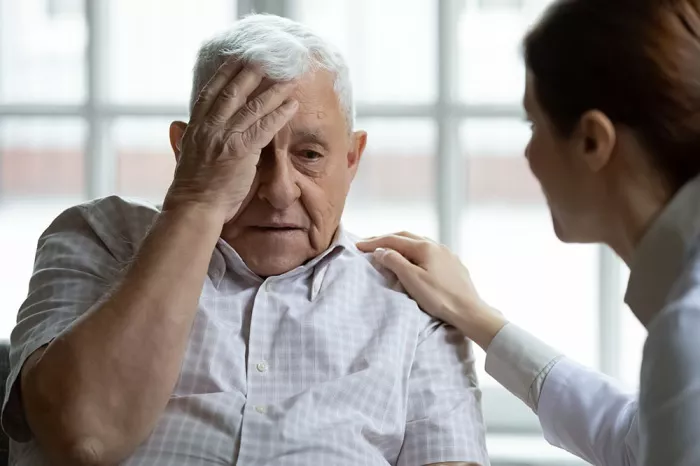Post-Traumatic Stress Disorder (PTSD) is a serious mental health condition that arises after an individual has experienced or witnessed a traumatic event. This article explores what PTSD means, its symptoms, and its impact on individuals and society.
Defining PTSD
What is PTSD?
PTSD stands for Post-Traumatic Stress Disorder, a psychiatric condition that can occur following exposure to a traumatic event. These events might include natural disasters, serious accidents, terrorist acts, war/combat, rape, or other violent personal assaults. PTSD is characterized by an inability to recover after experiencing or witnessing such events, leading to significant distress or impairment in daily functioning.
History of PTSD
The understanding of PTSD has evolved over time. Initially recognized in soldiers returning from war, it was referred to as “shell shock” during World War I and “combat fatigue” in World War II. It wasn’t until the 1980s that PTSD was officially recognized as a disorder by the American Psychiatric Association and included in the Diagnostic and Statistical Manual of Mental Disorders (DSM).
Symptoms of PTSD
Intrusive Thoughts
Individuals with PTSD often experience intrusive thoughts related to the traumatic event. These can include distressing memories, nightmares, or flashbacks where they feel as though they are reliving the event. These intrusive thoughts can be triggered by reminders of the trauma, such as a place, situation, or even certain sounds or smells.
Avoidance
Avoidance is a common symptom of PTSD. Individuals may go to great lengths to avoid reminders of the traumatic event. This can include avoiding places, people, activities, objects, and situations that bring back memories of the trauma. This avoidance can lead to significant alterations in one’s lifestyle and daily functioning.
Negative Changes in Thinking and Mood
PTSD can cause pervasive negative thoughts and feelings. This may manifest as ongoing and distorted beliefs about oneself or others, such as “I am bad” or “No one can be trusted.” Individuals might also experience feelings of fear, horror, anger, guilt, or shame, even if they are far removed from the traumatic event.
Hyperarousal and Reactivity
Hyperarousal refers to an increased state of heightened alertness and sensitivity to one’s surroundings. Symptoms include being easily startled, feeling tense or “on edge,” having difficulty sleeping, and experiencing angry outbursts. These symptoms can lead to difficulties in concentrating and increased irritability.
Impact of PTSD
On Individuals
PTSD can have a profound impact on an individual’s life. The condition often interferes with personal relationships, job performance, and overall quality of life. People with PTSD may find it difficult to maintain close relationships or trust others, leading to social isolation. The persistent symptoms can also contribute to other mental health issues, such as depression, anxiety, and substance abuse.
On Families
The impact of PTSD extends beyond the individual, affecting families and loved ones. Family members may experience emotional distress seeing their loved one suffer, and they might also have to deal with the fallout of the individual’s symptoms, such as emotional outbursts or withdrawal. This can lead to strained relationships and increased stress within the family unit.
On Society
The societal impact of PTSD is significant, especially considering the number of people affected by it, including military personnel, first responders, and survivors of abuse and disasters. PTSD can lead to decreased productivity and increased healthcare costs. Additionally, there are broader societal implications, such as increased rates of homelessness and substance abuse among those with untreated PTSD.
Risk Factors and Causes
Exposure to Trauma
The primary cause of PTSD is exposure to a traumatic event. However, not everyone who experiences trauma develops PTSD. The severity, duration, and proximity of the trauma can influence the likelihood of developing the disorder.
Personal Factors
Certain personal factors can increase the risk of developing PTSD. These include having a history of previous trauma, having a history of mental health issues, lacking a strong support system, and experiencing high levels of stress in everyday life. Additionally, biological factors such as genetics may play a role.
Environmental Factors
Environmental factors, such as ongoing stress and lack of social support, can exacerbate the symptoms of PTSD or make individuals more susceptible to developing the condition following trauma.
Diagnosis and Treatment
Diagnosis
Diagnosing PTSD involves a comprehensive evaluation by a mental health professional. This includes discussing the individual’s symptoms, the traumatic event, and how these symptoms affect daily life. The DSM-5 criteria for PTSD include specific symptoms that must be present for at least one month and cause significant distress or impairment.
Treatment Options
Several effective treatments for PTSD exist, often involving a combination of therapies. These include:
Psychotherapy
Cognitive-behavioral therapy (CBT) is particularly effective in treating PTSD. CBT helps individuals understand and change the thought patterns that contribute to their distress. Other therapeutic approaches include exposure therapy, which helps individuals confront and reduce their fear of the traumatic memory, and eye movement desensitization and reprocessing (EMDR), which helps process and integrate traumatic memories.
Medications
Medications can also play a role in managing PTSD symptoms. Antidepressants, particularly selective serotonin reuptake inhibitors (SSRIs), are commonly prescribed. These medications can help reduce symptoms of depression and anxiety associated with PTSD.
Support Groups
Support groups provide a space for individuals with PTSD to share their experiences and coping strategies. This can be incredibly beneficial for reducing feelings of isolation and providing a sense of community and understanding.
Coping Strategies and Support
Self-Care Practices
Engaging in self-care practices is crucial for individuals with PTSD. This includes maintaining a healthy lifestyle with regular exercise, balanced nutrition, and adequate sleep. Mindfulness and relaxation techniques, such as yoga and meditation, can also help manage symptoms.
Building a Support Network
Having a strong support network is vital. This network can include family, friends, mental health professionals, and support groups. Building and maintaining these relationships can provide emotional support and help individuals navigate their recovery journey.
Professional Help
Seeking professional help is often necessary for managing PTSD. Mental health professionals can provide the appropriate therapies and medications to help individuals cope with and recover from PTSD.
Conclusion
Post-Traumatic Stress Disorder (PTSD) is a complex and challenging condition that significantly impacts individuals and their loved ones. Understanding the symptoms and seeking appropriate treatment are crucial steps toward managing the disorder and improving quality of life. With the right support and interventions, individuals with PTSD can work towards recovery and lead fulfilling lives.
[inline_related_posts title=”You Might Be Interested In” title_align=”left” style=”list” number=”6″ align=”none” ids=”9205,9142,9136″ by=”categories” orderby=”rand” order=”DESC” hide_thumb=”no” thumb_right=”no” views=”no” date=”yes” grid_columns=”2″ post_type=”” tax=””]

































